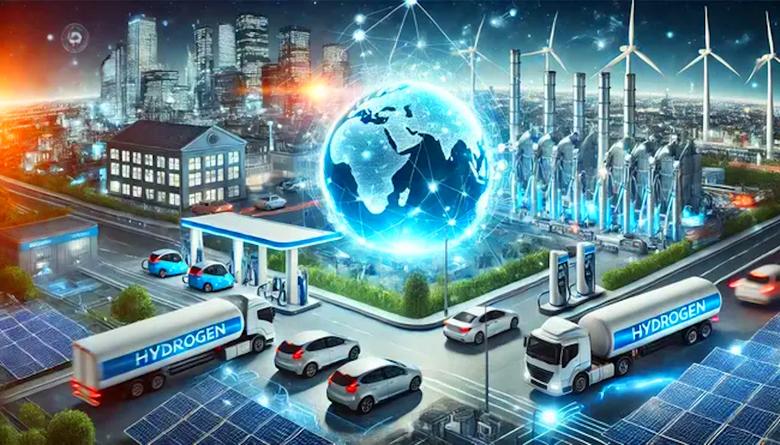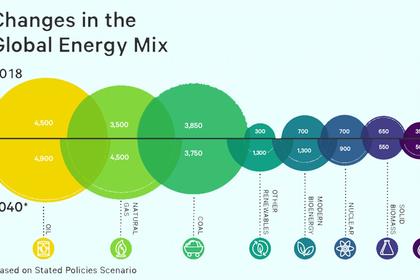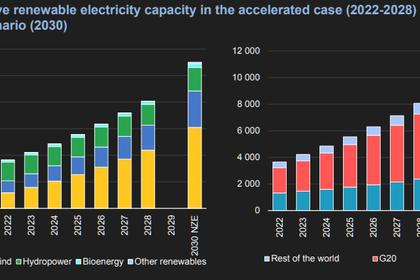
HYDROGEN ENERGY IMPLEMENTATION

By Alextin Mendonza Chief Executive Officer , Ampinity Energy Private Limited
ENERGYCENTRAL - Sep 16, 2024 - In a world driven by technological advancements, one of the most critical insights offered by Steve Jobs remains highly relevant today:
"You've got to start with the customer experience and work backward for the technology."
This principle applies not only to consumer electronics but also to the global implementation of hydrogen energy. As countries and industries increasingly adopt hydrogen as a key player in the journey toward decarbonization, focusing on how hydrogen fits into the customer experience is vital. It's not just about creating the technology—it’s about ensuring that this technology meets real-world needs.
The Hydrogen Revolution: Why It Must Start with the End-User
Hydrogen, often touted as the "fuel of the future," has immense potential to decarbonize key sectors such as transportation, manufacturing, and energy storage. But the successful implementation of hydrogen requires more than just developing the technology—it demands an understanding of how customers will experience and adopt hydrogen in their daily lives and business operations.
For example, while hydrogen fuel cells are incredibly efficient and produce zero emissions, their adoption in the transport sector will only succeed if they meet the needs of consumers: convenience, reliability, and accessibility. Imagine a business fleet or a logistics company considering hydrogen-powered trucks. Their decision will depend less on the technical prowess of hydrogen and more on the infrastructure available—like convenient hydrogen refueling stations, competitive pricing, and the seamless integration of hydrogen vehicles into existing operations.
As Jobs pointed out, "You cannot start with the technology and try to figure out where you're going to try to sell it." This perfectly applies to hydrogen's global implementation. It’s not enough to invent hydrogen production technologies like electrolysis or fuel cells and then expect consumers to adopt them. The rollout must be centered around real-world applications, convenience, and addressing specific pain points for industries and consumers alike.
Hydrogen Implementation in Transport: The Customer Experience Matters
In the global push for clean transportation, hydrogen fuel cells are becoming a key alternative to traditional internal combustion engines. Yet, to make hydrogen the fuel of choice for the masses, we must consider the entire customer journey:
1. Infrastructure Availability: Consumers will only embrace hydrogen-powered vehicles if refueling stations are as accessible and reliable as gasoline stations. Governments and corporations must prioritize building a comprehensive network of hydrogen refueling stations to ensure that drivers can travel with the same convenience as traditional fuel options.
2. Cost Efficiency: The cost of hydrogen-powered vehicles and hydrogen fuel must be competitive. Companies must look beyond just producing fuel cells and hydrogen tanks—they must understand the economic pressures customers face and design affordable hydrogen solutions that align with those realities.
3. Ease of Adoption: How easy is it for an industry to integrate hydrogen into its operations? Take logistics or public transportation, for instance. These sectors rely on efficiency and reliability. Companies offering hydrogen-powered solutions must ensure that refueling times, maintenance, and operational integration are as frictionless as possible.
Industry and Manufacturing: Hydrogen’s Role in Meeting Customer Needs
In industries like steel production, chemical manufacturing, and energy storage, the transition to hydrogen must solve tangible customer problems. Many industries are under regulatory pressure to reduce emissions, but they must also remain cost-competitive in a global marketplace. Implementing hydrogen requires solutions that are not just environmentally friendly but also scalable, affordable, and easily adaptable to existing processes.
For instance, green hydrogen, produced through electrolysis powered by renewable energy, is positioned to replace fossil fuels in various high-emission industries. But green hydrogen will only gain traction if it can offer:
Cost parity with traditional fuels
Consistent supply at an industrial scale
Seamless integration into existing industrial workflows
Again, the technology is only as good as the customer experience it creates. By focusing on the customer’s needs—whether that customer is an industrial giant or a fleet operator—companies can design hydrogen solutions that are adopted on a global scale.
The Global Rollout: Scaling Hydrogen with the End-User in Mind
As nations around the world invest in hydrogen infrastructure, from Europe to Asia, the same lesson applies. Governments must work closely with private industries to ensure that hydrogen technologies are not developed in a vacuum. Instead, they must be integrated into the existing energy ecosystem in a way that benefits the end-users.
Take Germany’s efforts, for example. As one of the pioneers in hydrogen implementation, the German government has worked extensively on creating a hydrogen economy by integrating hydrogen into transport, industry, and grid storage. The key to their success is not merely technical innovation but a customer-centric approach—one that understands the needs of its citizens, industries, and businesses and builds infrastructure around those needs.
Similarly, Japan’s hydrogen strategy focuses on large-scale projects that serve both the industry and consumers. Japan's approach to hydrogen-powered transportation and energy storage considers the end-to-end experience of consumers—from ensuring hydrogen is readily available to integrating hydrogen fuel into everyday life.
Designing the Hydrogen Future with the Customer First
Hydrogen has the potential to transform the global energy landscape, but its success hinges on a customer-first approach. Companies and governments must take a cue from Steve Jobs’ wisdom and start with the customer experience, working backward to ensure that hydrogen technology is accessible, reliable, and aligned with real-world needs.
By focusing on infrastructure, affordability, and ease of adoption, we can ensure that hydrogen becomes a truly transformative energy source, driving the world toward a sustainable, carbon-neutral future.
-----
Earlier:


















